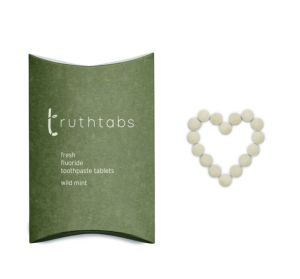Why use a natural toothpaste? Chances are you choose your toothpaste based on the taste, texture or certain special properties like whitening. But have you ever considered what you're actually putting in your mouth? Millions of people happily brush their teeth for two minutes, twice a day, without giving much thought to their toothpaste ingredients. However, if you take the time to discover what actually goes into commercial brands, you might decide to opt for a natural toothpaste instead.
There are hundreds of brands of toothpaste available in the UK, and in this guide we want to help you understand what to look for when choosing the best toothpaste for you. If you'd prefer to only use natural ingredients, you can buy a natural toothpaste or – even better – try a homemade toothpaste recipe.
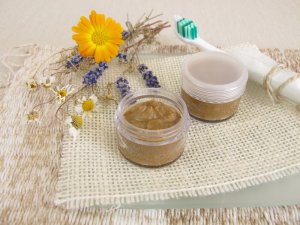

Keep reading to find out:
- What is toothpaste made of?
- The benefits and potential drawbacks of different toothpaste ingredients
- What's safe for babies, toddlers and children
- How to make your own toothpaste at home
- Natural toothpaste options
We hope this information helps you make the right decisions about your oral care routine.
Table of contents
What is toothpaste made of?
Look at the ingredients on your tube of non-natural toothpaste and you'll probably find a list of words that don't make much sense to you. Of course, each one serves a particular purpose. The products in toothpaste can help:
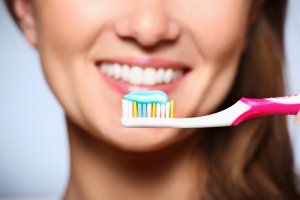

- Protect against plaque and tooth decay
- Remove food particles from teeth
- Improve the texture and taste
- Get the toothpaste into hard-to-reach places
- Freshen breath
- Fight gingivitis (gum disease)
- Whiten teeth by removing surface stains
- Reduce tooth sensitivity
With so many different products available, each one containing a different combination of ingredients and offering different benefits, you can see why it's hard to know which toothpaste is best for you.
To complicate matters, although these ingredients serve a particular purpose in aiding oral hygiene, they might prove detrimental to other aspects of your health.
Why toothpaste ingredients matter
Our mouths and gums are lined with mucous membranes, known as oral mucosa. This tissue contains the nerves that let you sense hot and cold, taste buds so you can experience different flavours, and salivary glands to keep your mouth moist. It also helps protect your body against some bacteria and toxins.
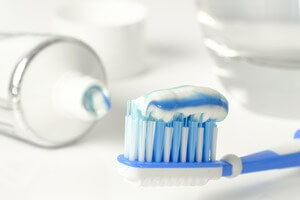

However, certain substances are very easily absorbed through the oral mucosa. This means that even in the two minutes while you're brushing, ingredients from your toothpaste can enter your blood stream.
Some ingredients might also cause an allergic reaction in certain people, leading to mouth sores, dry mouth, or digestive problems.
So, how do you know which ingredients are genuinely beneficial and which might be causing harm to your body? Toothpaste manufacturers will, of course, rigorously defend the benefits of their products. At the same time, it's not hard to find articles and studies pointing to numerous cancer risks and other health problems.
Below you'll find information about some of the most common (and controversial) toothpaste ingredients. We have given both the benefits claimed by manufacturers and the health concerns raised by others, so you can make a more informed choice. In many cases there are ongoing disputes regarding claims over safety and harmfulness, so it's important you do further research and draw your own conclusions if any of these ingredients concern you.
This information is summarised in a table at the end of this section before we go on to look at natural and homemade toothpaste options.
Fluoride
Fluoride is a mineral that occurs naturally in water and some foods. It has been added to many brands of toothpaste since the 1970s to help fight tooth decay; a benefit supported by extensive scientific research and backed by World Health Organization policies.
Fluoride usually appears in the ingredients list as sodium fluoride, stannous fluoride or sodium monofluorophosphate. It's measured in parts per million (ppm). Most sensitive toothpastes contain fluoride in one of these forms.
The following video explains the how we originally discovered fluoride was linked to healthy teeth, and how exactly it works to prevent decay.
The NHS recommends using toothpaste with the following concentrations of fluoride:
Age | Fluoride concentration | Amount to use |
Children under 3 | At least 1000ppm | A smear |
Children 3-6 | At least 1000ppm | A pea-sized amount |
Children over 6 and adults | 1350ppm – 1500ppm | A pea-sized amount |
The main concern about fluoride is its potential to cause a condition called dental fluorosis. This occurs when excessive amounts of fluoride are ingested while enamel is forming, i.e. when children are young. Mild fluorosis (the most common form) results in small, white patches on the surface of the teeth. In severe cases, teeth can become discoloured and pitted, looking like they have been corroded.


Fortunately, the risk of dental fluorosis in the UK is very low. It generally only occurs if young children take fluoride supplements and also live in an area where the water supply is fluoridated. Swallowing toothpaste increases the risk, so it's important for parents to supervise children's brushing until at least age seven. Read about other ways to prevent fluorosis in children in our full article.
Fluoride can be toxic when ingested in high concentrations, but the amounts contained in toothpaste are far too low to present this risk.
It's worth noting that fluoride needs to remain on the teeth for a while after brushing in order to be effective. You should therefore not rinse with water or mouthwash straight after brushing, as this washes away the fluoride.
If you decide to give your child, toddler or baby toothpaste without fluoride, speak to your dentist about other ways to protect kids' teeth against decay.
Triclosan
Triclosan is used in some toothpastes for its antibacterial properties which help prevent gum disease. Although proven effective at this, potential side-effects include hormone disruption, cancer, and antibiotic resistance.
Many manufacturers are now phasing out the use of triclosan in toothpastes, soaps and cleaning products, so it's becoming easier to avoid this ingredient if you wish. However, no health authorities in the UK, EU or US have found it to be unsafe for use in toothpaste.
Sodium lauryl sulphate (SLS)
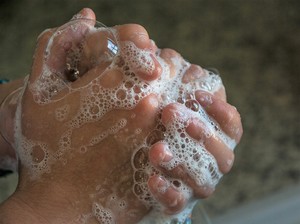

SLS is a foaming agent (surfactant) which is also used in products like shampoo and liquid soap. It makes it easier for you to spread toothpaste around your mouth, and it also helps dissolve dirt and grease. However, SLS-free toothpastes can be just as effective as long as you brush properly.
Some people have raised concerns about the toxic or carcinogenic nature of SLS, but it hasn't been ruled unsafe for use in toothpaste. Perhaps a more common complaint regarding SLS is skin irritation, which in the case of toothpaste materialises as canker sores (mouth ulcers).
Studies have shown that switching to an SLS-free toothpaste can reduce the occurrence of canker sores, or at least make them less painful. If you suffer from mouth ulcers, it could be worth a try – you'll just need to get used to the lack of foam as you brush. Read more about how to treat canker sores.
Abrasives
For toothpastes to work effectively, they need to be slightly abrasive. Without small abrasive particles, they couldn't scrub bits of food, plaque, and stains from the surface of teeth. However, too much abrasiveness and you risk damaging your tooth enamel or gums.
The abrasive ingredients used in toothpastes can be natural or synthetic, and include:
- Calcium carbonate
- Sodium bicarbonate (baking soda)
- Hydrated silica
- Aluminium hydroxide
- Calcium hydrogen phosphates
- Activated charcoal
- Mica
- Hydroxyapatite
Whitening and tartar control toothpastes are typically the most abrasive since they need to work harder to achieve the results they promise. As they have the potential to remove more tooth enamel, they can lead to sensitivity in some people's teeth. If you want to know how abrasive your toothpaste is, check out this handy guide compiled by a dentist in America. It ranks dozens of brands according to their Radioactive Dentin Abrasiveness (RDA).
Note that it's not just over-abrasive toothpaste that can cause tooth sensitivity and damage gums. If your toothbrush bristles are too hard or you brush with too much force, this can have a similarly damaging effect.
Read more about safe ways to whiten your teeth in our full guide to teeth whitening, or check out the best whitening toothpastes in the UK.
Microbeads
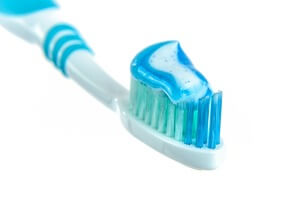

Some brands of toothpaste contain microbeads to help with abrasion. However, the use of these tiny pieces of plastic in toothpastes and other cosmetic products has recently come under scrutiny because of their environmental impact. In addition, some dental professionals have noticed microbeads becoming lodged in patients' gum pockets, increasing the risk of infection.
In January 2018, the UK government banned the use of microbeads in cosmetics and personal care products, including toothpaste. Further legislation came into force in June 2018 to ban the sale of any such products containing microbeads in England and Scotland.
Although you no longer need to worry about this particular ingredient if you live in these areas, it's a useful illustration of how toothpaste manufacturers don't always get it right – even in this heavily regulated environment. Rather than blindly accepting every claim they make, it's a good idea to do a bit of extra research and form your own opinions on what's the best and safest toothpaste for your needs.
Some toothpastes in the UK carry the Oral Health Foundation seal of approval. This offers assurance that any claims the manufacturer makes are backed by reliable scientific evidence. You can find a list of approved products here.
Humectants and thickening agents
Humectants help stop toothpaste drying out in the tube. Common humectants include glycerol (also called glycerine), sorbitol (also a sweetener – see below), and propylene glycol.
Toothpastes also contain thickening agents or binders to help keep all the ingredients together and give the paste a consistent texture. These include natural gums and colloids, synthetic cellulose, and carrageenan.
Without these ingredients, toothpaste would either get stuck in the tube or be too runny to stay on your toothbrush. However, some of these products might cause digestive problems for certain people, especially if consumed in large quantities. Some professionals argue that glycerol forms a coating over the teeth, inhibiting remineralisation from other ingredients.
Natural toothpastes are available without any artificial preservatives or thickeners, and if you make your own toothpaste then you won't need to worry about adding them.
Sweeteners and flavours
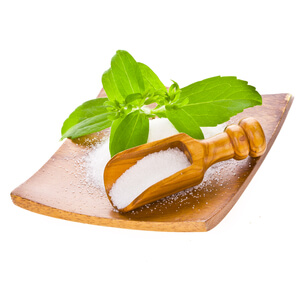

You won't be surprised to discover that all these ingredients don't taste great by themselves. That's why toothpaste also contains various flavours and sweeteners to make it more palatable.
You'd think the one ingredient you wouldn't find in toothpaste is sugar, since that's one of the main causes of tooth decay. The majority of brands do use a sugar-free alternative to sweeten their toothpaste but it's still work double-checking the ingredients list to see if there is sugar in the toothpaste you or your children use.
Sweeteners commonly used in toothpaste include:
- Sorbitol: A naturally-occurring sugar alcohol used in many sugar-free foods. May cause bloating and other digestive problems for some people.
- Saccharin: Also used to flavour some sugar-free drinks and foods. Although it has been linked to cancer in rats when consumed in high doses, research has shown the same risk does not apply to humans.
- Xylitol: A naturally-occurring sugar alcohol with antibacterial properties, also used in sugar-free chewing gum and mints. It has been shown to reduce the risk of dental caries and promote enamel remineralisation when combined with fluoride in toothpaste, although other studies have shown no such benefits. Excessive consumption can result in diarrhoea and bloating. It's also poisonous for dogs, so xylitol toothpastes shouldn't be used on your pets.
- Aspartame: A low-calorie sweetener widely used in foods and drinks all over the world. Many scare stories have circulated since its introduction in the UK in the 80s, linking it to various kinds of cancer. However, extensive studies have concluded that aspartame is safe for human consumption. It's a source of phenylalanine, which should be avoided by people with the rare genetic condition phenylketonuria (PKU).
- Stevia: A natural sugar alcohol derived from a plant native to South America. Used as a sweetener to improve the taste of many natural toothpastes. Can also be used in homemade toothpaste recipes.
Toothpaste is traditionally mint flavoured, but some people prefer toothpaste without mint because they don't like the taste or have a sensitivity to peppermint oil. Fortunately, there are plenty of mint-free options available.
Non-mint toothpastes can be completely unflavoured, or they may have other flavours such as:
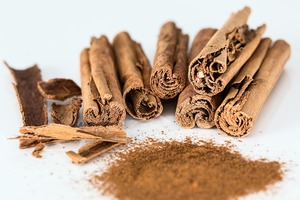

- Clove
- Cinnamon
- Fennel
- Ginger
- Fruit or bubblegum (usually marketed at kids)
Some commercial brands produce these flavours, but you'll probably find more choice if you look to lesser-known, natural brands. You'll also find more mild mint options – worth a try if you find the taste of regular toothpaste overpowering.
Ingredients summary
Here is an overview of the different ingredients found in commercial toothpastes, why they're there, and what the potential risks are.
Ingredient | Purpose/benefits | Potential concerns |
Fluoride | Fights tooth decay | Risk of dental fluorosis if ingested in large quantities by young children |
Triclosan | Antibacterial – helps prevent gum disease | Hormone disruption and antibiotic resistance |
Sodium lauryl sulphate (SLS) | Foaming agent – makes toothpaste foamy and dissolves dirt | Skin irritation causing mouth ulcers; possible cancer risk |
Abrasives (various natural and synthetic) | Scrub dirt and plaque off teeth; stronger abrasives help remove stains for whitening | Too much abrasion removes enamel, causing sensitivity, and can damage gums |
Humectants and thickeners (various) | Keep toothpaste moist and help improve the texture | Some people experience digestive problems from using certain products |
Sweeteners (various natural and synthetic) | Improve taste | Some artificial sweeteners can cause bloating and other digestive problems; some the subject of cancer scares but considered safe for humans |
Remember, many of these potential concerns have not been scientifically proven, and not everyone will react in the same way to each ingredient. You can minimise many of the risks simply by training children to spit out their toothpaste rather than swallow it.
If you're worried about using any of these products, then you could try one of the DIY toothpaste recipes listed below. Alternatively, you can opt for a shop-bought toothpaste made with more natural ingredients. You might also be interested in our article on natural tooth care.
Homemade toothpaste recipes
If you want to know exactly what is going into your toothpaste, your best bet is to make it yourself. There are all kinds of DIY toothpaste recipes that use natural ingredients – many that you may already have at home.
Here are some of the natural ingredients you can use when making your own toothpaste:
Natural ingredient | Purpose/remarks |
Purpose/remarks | Helps remove dirt and stains from teeth without being too abrasive. Neutralises acids in the mouth. |
Coconut oil | Promotes oral health, may fight bacteria that cause cavities. |
Activated charcoal | Helps remove surface stains for teeth whitening. |
Bentonite clay | Gently polishes teeth. Neutralises acids in the mouth and aids remineralisation. |
Stevia | A natural sweetener. Available powdered, liquid, or raw. |
Xylitol | A sweetener which also fights the bacteria that cause cavities. Use sparingly to avoid overly sweet toothpaste. |
Sea salt | Antibacterial properties. |
Raw cacao powder | Promotes remineralisation. Coarsely ground cacao nibs can also be used as an abrasive. |
Essential oils or extracts (peppermint, tea tree, lemon, orange, cinnamon, clove, etc.) | Add flavour, some have antibacterial properties. Some essential oils carry possible health risks or are unsuitable for children and toddlers so research your choice first. |
Try to avoid using ingredients that are naturally acidic, such as lemon juice. Acid destroys tooth enamel and can cause irreversible damage over time.
Here are some recipes you can try at home. If you don't like the texture of the first one you make, try another which uses different ingredients. You can experiment with different flavours until you find a taste you like. If you're making a homemade toothpaste for toddlers or babies, avoid using essential oils and instead use milder plant extracts or just stevia.
Natural baking soda toothpaste
Many toothpaste recipes (including some commercial ones) use baking soda (sodium bicarbonate) for its abrasiveness and alkalinity.
To make a basic bicarbonate of soda toothpaste, you'll need:
- 100g of baking soda
- 10-15 drops of your chosen oil for flavour
- purified water
- 1 tsp fine sea salt
Simply mix the baking soda, salt and oil together then gradually add water a little at a time until the paste reaches a consistency that suits you. The sea salt adds extra minerals, but if you don't like the taste you can just leave this out.
Bentonite clay toothpaste
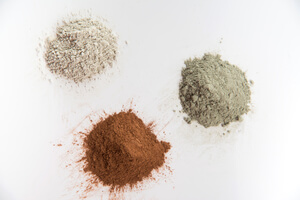

Some people use powdered bentonite clay in their toothpaste for its remineralising properties. It's also a very gentle abrasive. This recipe uses either stevia or xylitol as a sweetener, depending on your preference.
The writer has developed three flavours – peppermint, orange and lemon – which she claims taste and feel just like the brand Earthpaste, but without the price tag. Although the ingredients require some up-front investment, the overall cost per ounce of this cheap toothpaste works out about 1/3 less than buying the branded version.
You shouldn't store or handle the clay with anything metal, as this can alter its properties. Instead use glass, plastic or wood jars and scoops.
Vegan coconut oil toothpaste
In the following video, Niamh shows how to make vegan toothpaste with coconut oil. She flavours this recipe with peppermint and eucalyptus oil, and uses arrowroot powder as an alternative to baking soda for people with sensitive teeth.
The basic recipe requires just four ingredients:
- 1 cup coconut oil
- 1/2 cup arrowroot powder
- 20 drops each of peppermint and eucalyptus oil
There is also the option of adding a pinch of activated charcoal. Some toothpastes use activated charcoal because it helps to remove surface stains, giving a whitening effect. We have a lot more information on how to whiten teeth with activated charcoal in our separate guide.
In case you don't have time to watch the video, here is the method Niamh uses:
- Sterilise an airtight container by placing it in boiling water for 10 minutes
- Melt or stir the coconut oil to remove any lumps
- Add the arrowroot powder
- Add the oil
- Mix thoroughly until all powder is dissolved
- Pour into the container and let it set
She says the combination of oils she uses leaves her mouth feeling really fresh.
Chocolate toothpaste
Yes, you read that right! Chocolate toothpaste… but we're not talking about scrubbing your teeth with a bar of Dairy Milk.
Instead, you'll need to use raw cacao to benefit from a naturally occurring chemical compound called theobromine. Theobromine has been shown to protect enamel through remineralisation, and it can also help reduce tooth sensitivity. In this article, Emily of Naturally Free Life explains more about the science behind cacao and offers this recipe for homemade chocolate toothpaste:
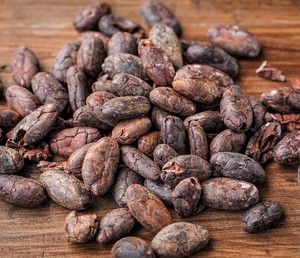

Ingredients:
- 50g coconut oil
- 1 tsp raw cacao powder
- 1 tsp bentonite clay
- 1 tbsp baking powder
- ½ tsp sea salt
- 20-30 drops of your chosen essential oil for taste, if desired
To make it, just soften the coconut oil so you can mix in the other ingredients – but don't let it become runny as the baking powder will sink to the bottom. Emily adds a helpful reminder about storage: any coconut oil toothpastes will melt if they get too hot, so store them out of the sun.
If you have problems getting your toddler or child to brush their teeth properly, this chocolate toothpaste surely has to be worth a try. There are also various branded toothpastes available which use natural ingredients and are flavoured to appeal to children. Keep reading to find out more about buying pre-made natural toothpaste.
Remineralising toothpaste
Finally, if you want to try your hand at a more complex recipe, how about this remineralising and whitening toothpaste from healthy living blogger DaNelle? She uses a few familiar ingredients plus some extra minerals to boost enamel remineralisation and add whitening properties.
Each batch requires:
- 120ml filtered water
- 30g bentonite clay
- 30g tbsp coconut oil
- 5 tsp calcium/magnesium powder (blend)
- ¼ tsp unprocessed salt
- ¼ tsp baking soda
- 10 drops trace minerals
- 20-30 drops of your preferred essential oil for flavour
- Stevia to taste, if desired (a little goes a long way)
Simply mix all the ingredients in a food processor until smooth and store in a glass jar or silicone squeeze tube. It should last up to 3 months.
View DaNelle's original recipe and read more about the benefits of these ingredients here.
The best natural toothpaste available in the UK
Although homemade toothpastes give you complete control over what you put in your mouth, we know not everyone has the time to make their own toothpaste at home. Certain recipes can also be quite expensive because of the ingredients they use. Plus, homemade pastes may lack the visual appeal that encourages your family to brush properly every day!
If you're still keen to avoid the chemicals added to most commercial brands, one alternative is to buy a natural toothpaste online or from a supermarket or chemist.
There is no official classification for products labelled as ‘natural' so it can mean different things to different people. You might be looking to exclude certain ingredients, for instance, or perhaps you want a herbal or vegan toothpaste.
Here we have listed some of the most popular natural toothpastes sold in the UK. This is just to give you an idea of what is available – there are plenty of others you could try.
Truthbrush
Our top pick for the best natural toothpaste available in the UK is Truthbrush's Truthtabs. Truthtabs are made here in the UK from clean ingredients to ensure your brushing experience is as effective and enjoyable as possible. They are made without using animal products, have no harmful chemicals or preservatives, and are environmentally friendly. Every pack contains 186 tablets for a money-saving three-month supply for brushing twice a day.
Toothbrushes toothpaste tabs are Wild Mint flavoured and when you bite into them these toothpaste tablets foam like toothpaste, leaving your teeth feeling clean and fresh – just bite, brush and spit! Although the ingredients in the tablets are all natural and clean, they do contain 1450 ppm fluoride—the amount recommended by dentists.
The packaging itself is made of 100% recyclable and home-compostable materials. However, if you want something a little more durable to hold your toothpaste tabs, Truthbrush also sells glass apothecary jars for Truthtabs storage.
You can also buy just a one-month supply of these tablets if you want to try them before committing to a three-month supply!
Green People
Green People make a range of toothpastes that use 100% natural ingredients, many of which are from organic farming. Children can choose from Mandarin or Spearmint flavours, both containing 34% organic ingredients. Since it's free from fluoride, SLS, and a load of other “nasties”, this is a good organic toothpaste for toddlers who are still prone to swallowing as they brush.
Discover more toothpastes for children here, including some more fluoride-free options.
For adults, Green People offer four flavours: peppermint, minty cool, fennel, and citrus. One reviewer has commented that the peppermint one is one of the “best-tasting” toothpastes her family has tried, and she has stopped getting the mouth ulcers which she experienced with toothpastes containing SLS.
As an added benefit, all these toothpastes are gluten-free. They also contain betaine, a natural ingredient which promotes saliva production, relieving the discomfort of a dry mouth.
AloeDent
One of the more mainstream ‘natural' options, you can find AloeDent in plenty of high street shops and supermarkets, as well as online.
The formula for the toothpaste is, as you may have guessed, based on Aloe Vera gel, which is known for its soothing and healing properties. As well as a triple action toothpaste, they have one for sensitive teeth and another for whitening.
You'll find fluoride and non-fluoride options in this range, so it could be a good choice if you want a toothpaste that contains fluoride but is free from many of the other ingredients we listed earlier. If you want to avoid fluoride, check carefully to make sure you're buying the right one.
There is also a strawberry flavoured fluoride-free toothpaste for children. This has received mixed reviews, with some parents saying their kids love it and others who won't touch it.
Kingfisher
Kingfisher toothpaste comes in 9 varieties, all of which are free from artificial colouring, flavours, sweeteners and preservatives. It's also GM-free, suitable for vegans, and not tested on animals, so it ticks a lot of boxes for people looking for the best natural toothpaste around.
Kingfisher was also the first brand of natural toothpaste to receive approval from the British Dental Health Foundation.
You can choose from the following fluoride-free toothpaste varieties:
- Mint (also available with fluoride)
- Fennel (also available with fluoride)
- Aloe vera with tea tree and mint
- Aloe vera with tea tree and fennel
- Baking soda
- Naturally whitening charcoal
- Strawberry
All of Kingfisher's toothpastes are free from sodium lauryl sulphate. Instead, they contain sodium lauroyl sarcosinate, an ingredient derived from palm oil, as a dispersant. Some people choose to avoid palm oil because of the negative environmental impact of large scale farming, but Kingfisher takes this approach:
We have written assurances that the Sumatran palm oil that we use comes from sustainable managed estates… We believe that working with local people to build a sustainable future for the land, the animals and them is a more constructive way forward than boycotting.
There is no foaming agent in these kinds of toothpaste. Some users appreciate this while others have found it a little too “dry”.
Redmond Earthpaste
Redmond Earthpaste prides itself on its simple ingredients list: water, clay, essential oils and xylitol (they even have an unsweetened spearmint version without the xylitol). Without any fluoride, colouring, chemical preservatives or foaming agents, it's a good natural toothpaste for families who want to avoid these additives.
Minty flavours include peppermint, spearmint (unsweetened), wintergreen, and activated charcoal mint. Those who prefer non-mint toothpaste flavours can choose from cinnamon and lemon.
Due to the clay content, this toothpaste does include traces of lead, which puts some users off. However, the amount found in these products is far less than you'd naturally get from a serving of certain vegetables and nuts. Read their elemental analysis here and their explanation here.
MySmile's Natural Teeth Whitening Powder
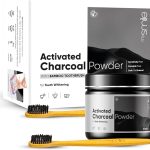

If you are looking for something natural to clean your teeth with that whitens while you brush then you should consider MySmile's whitening powder.
Their Peppermint flavoured Activated Charcoal Teeth Whitening Powder is made from Natural Activated Charcoal, Coconut Oil and Sodium Bicarbonate. The charcoal works to whiten teeth by removing surface stains when brushed on.
It has a mint and coconut flavour which helps to reduce bad breath and leave your mouth feeling fresh.
This eco-friendly teeth whitening charcoal powder also comes with two 100% biodegradable handmade bamboo toothbrushes .
And the best part is, MySmile's Natural Teeth Whitening Powder doesn't break the bank!
Conclusion
Commercial toothpaste contains many ingredients which some people believe carry health risks. Having done your own research into these, you may decide to avoid things like fluoride, triclosan, SLS, and artificial flavours, colourings and preservatives.
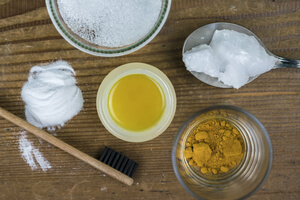

Remember that fluoride toothpaste is currently promoted by many dental organisations and governing bodies as a proven way to fight tooth decay. If you decide not to use it for whatever reason, speak to your dentist about other ways to protect your teeth – especially if you have children. Xylitol is a natural alternative to fluoride, which some studies have shown to fight decay and help remineralisation.
You can buy natural toothpaste, both with and without fluoride, which doesn't contain many of the most controversial toothpaste ingredients. These are typically more expensive than standard toothpaste varieties.
Another option is to make your own natural toothpaste at home with ingredients like baking soda, clay, coconut oil and essential oils. This lets you control what you put in your body and may also work out cheaper, depending on the recipe you follow.
Whatever you decide, we hope you now understand more about what various ingredients do and which ones you're happy using in your toothpaste.






